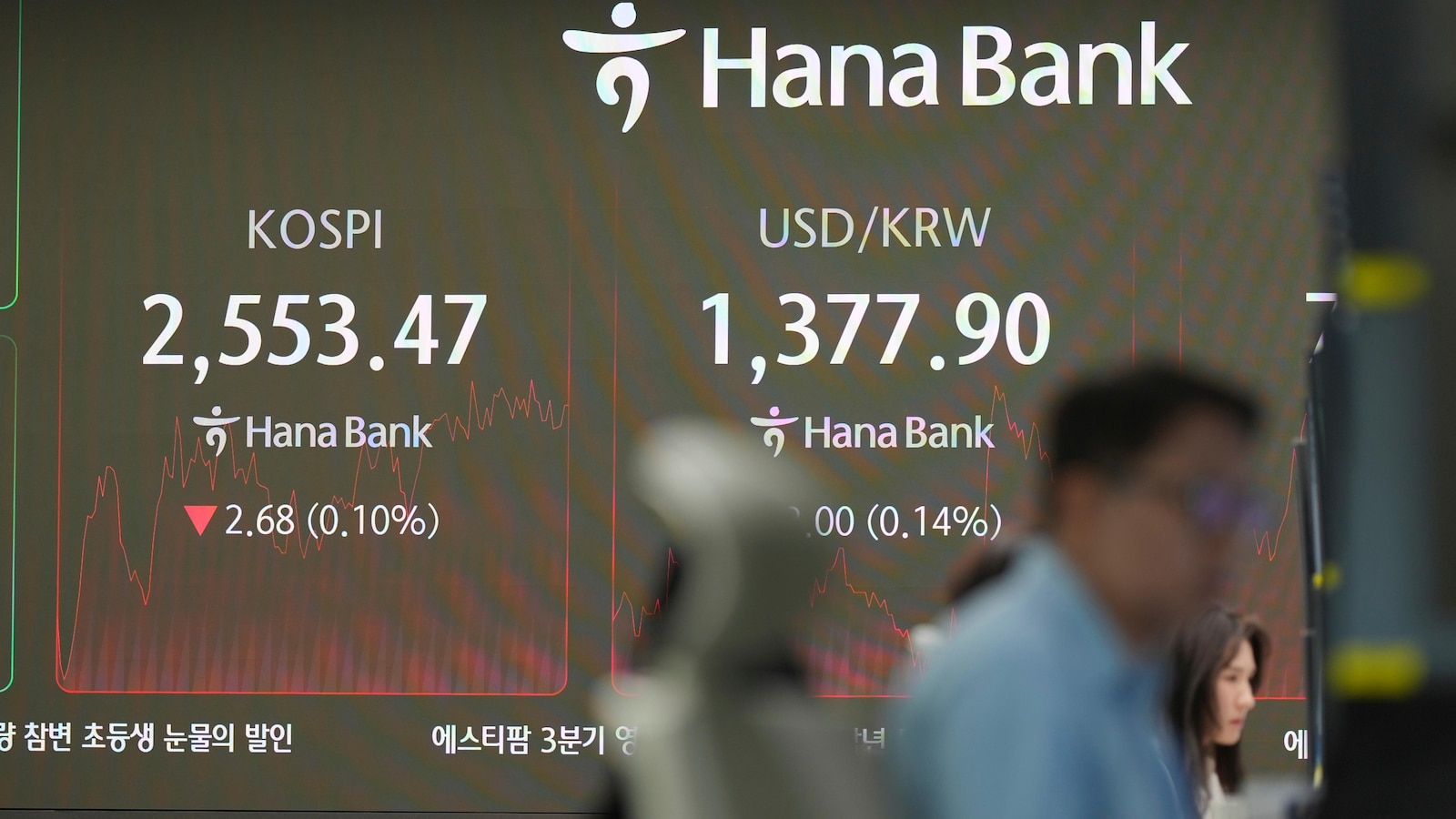In contrast, Chinese markets displayed resilience against the bearish trend in Asia. The Hang Seng index in Hong Kong increased by 1.0%, reaching 20,526.69, while the Shanghai Composite index rose by 0.4% to 3,294.55. Positive signs emerged from China’s manufacturing sector, with the official Purchasing Managers’ Index (PMI) climbing to 50.1 in October, breaking a five-month contraction streak. Additionally, a private survey showed a reading of 50.3, indicating growth above the expansion threshold.
Australia’s S&P/ASX 200 index fell by 0.8% to 8,093.80 after the Australian Bureau of Statistics reported a year-on-year increase of 3.9% in its Producer Price Index for the third quarter, marking the first drop below 4.0% annual growth since September 2023.
South Korea’s KOSPI remained nearly unchanged at 2,556.57. Taiwan’s TAIEX lost 0.8% following Apple’s quarterly earnings report, which indicated a decline in revenue from China. Shares of Taiwan Semiconductor Manufacturing Company, a key Apple supplier, fell by 1%.
The U.S. markets faced significant challenges, with the S&P 500 experiencing its worst day in eight weeks, plunging 1.9% to 5,705.45, further decreasing from its October record. The Dow Jones Industrial Average dropped 0.9% to 41,736.46, while the Nasdaq Composite fell sharply by 2.8% to 18,095.15, marking consecutive losses after reaching an all-time high.
Microsoft reported better-than-expected profit growth in its latest quarter, with revenue surpassing forecasts. However, the stock still saw a 6% drop as investors expressed concerns over potential future disappointments. Similarly, Meta Platforms, Facebook’s parent company, reported a profit that exceeded expectations but fell by 4.1% due to warnings about significant upcoming expense increases related to ongoing investments in artificial intelligence.
The decline of big tech stocks in October erased gains for the S&P 500, which fell by 1% for the month—its first monthly decline in six months, despite reaching record levels during that period.
In the bond market, U.S. Treasury yields declined after mixed economic reports on the U.S. economy. One report indicated that a measure of inflation, which the Federal Reserve aims to reduce from 2.3% to 2.1%, was nearing the Fed’s 2% target. However, core inflation trends—excluding food and energy costs—remained slightly above economists’ expectations.
Additionally, another report noted a slowdown in wage and benefit growth among workers during the summer, suggesting reduced inflationary pressure ahead. Meanwhile, a separate report revealed a decrease in unemployment claims, indicating relatively low layoffs across the country.
Following these reports, Treasury yields fluctuated before decreasing, with the yield on the 10-year Treasury falling from 4.30% to 4.27%, still significantly above the mid-September level of approximately 3.60%.
In commodity trading, U.S. benchmark crude oil prices rose by $1.33 to $70.59 per barrel in electronic trading on the New York Mercantile Exchange. International benchmark Brent crude also increased by $1.23, reaching $74.04 per barrel.
The euro fell slightly, trading at $1.0878, down from $1.0885.

